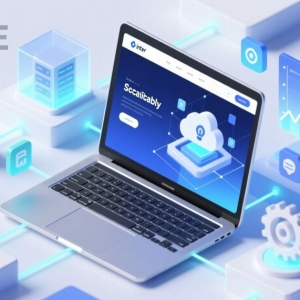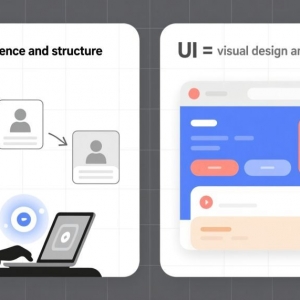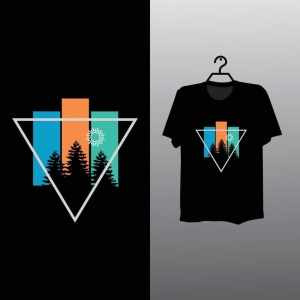Web design has long been a blend of art and function, requiring both captivating visuals and robust performance. Historically, this meant hours of manual labor—coding layouts, testing features, and refining every detail. Artificial intelligence is now reshaping this process, making it faster and more versatile.
For businesses, this evolution means web design services can deliver polished results more quickly and with greater adaptability. For the web designer, AI offers tools that streamline repetitive tasks, freeing them to focus on creative strategy and storytelling. AI doesn’t replace human expertise—it enhances it, shifting the designer’s role toward vision and connection.
From Ideas to Prototypes Instantly
Building a website from a concept once required days or weeks of effort. Designers manually crafted layouts, chose fonts, and tested color schemes. AI has changed this dynamic. Modern tools can generate draft designs in minutes.
Input brand assets like colors, logos, or content, and AI produces a range of layout options. Some may need tweaks, but others can closely match the client’s vision. This speed allows clients to review mockups sooner, accelerating feedback and reducing revisions. A web designer can focus on refining the design rather than building it from scratch.
For businesses, this efficiency means faster launches, enabling them to establish or update their online presence with minimal delay.
Personalization That Feels Natural
Websites today are dynamic, adapting to each user’s needs. AI enables this by analyzing behavior in real time—tracking clicks, scroll patterns, or time on page—and tailoring the experience accordingly.
For instance, an online store might display products based on a user’s browsing history. A mobile visitor could see a streamlined interface with larger, touch-friendly buttons. A blog might offer basic content to new readers and advanced guides to regulars. These personalized experiences, once complex to code, are now automated, saving time and resources.
Businesses using web design services gain websites that feel custom without requiring constant manual updates. This adaptability boosts engagement and drives loyalty.
Building Inclusive Websites
Web design is about more than looks—it’s about access for all. Millions rely on assistive tools like screen readers or need clear visuals to navigate. AI helps by scanning sites for issues, such as missing image descriptions, low-contrast colors, or confusing navigation.
But AI’s role is technical. A web designer brings the human judgment needed to ensure the site feels intuitive and welcoming. Machines can flag errors, but humans craft experiences that resonate emotionally. This partnership helps businesses meet accessibility standards while creating sites that connect with diverse audiences.
Content That Resonates
Visuals capture attention, but content tells the story. AI now supports content creation, generating drafts for FAQs, product descriptions, or headlines. It can optimize for tone, clarity, or SEO, streamlining repetitive tasks.
Human creativity remains vital. AI text can feel flat, risking a disconnect with readers. A web designer refines these drafts, ensuring the voice aligns with the brand and the layout emphasizes key messages. For a small business, AI might produce quick product blurbs, while the designer ensures the tone feels authentic and the design highlights what matters.
This collaboration delivers content that’s both efficient and engaging, strengthening the site’s impact.
The Web Designer’s New Focus
Concerns that AI will replace designers miss the essence of web design. It’s about understanding human needs, emotions, and cultural nuances—areas where AI falls short. Today’s web designer is a strategist, blending AI’s efficiency with human insight.
They decide when to trust AI’s suggestions and when to rely on intuition. A layout may be technically perfect, but only a designer can ensure it feels authentic or trustworthy. This shift elevates their role from coder to curator.
For businesses, choosing a skilled web designer remains crucial. Tools enhance efficiency, but the designer’s vision shapes the site’s success.
Why It Matters for Businesses
AI-driven web design services offer clear benefits: faster builds, lower costs for routine tasks, and seamless personalization. Content updates are simpler, keeping sites fresh without extensive coding.
But technology alone isn’t enough. A skilled web designer uses AI as a partner, refining outputs to reflect the brand’s identity. This matters because a website is often a business’s first impression. It’s not just about functionality—it’s about creating a connection that feels personal and authentic.
Looking Forward
AI’s role in web design will continue to expand. Tools now optimize code automatically and predict user behavior before launch. Some platforms generate countless design variations, testing their performance to refine outcomes.
The future lies in collaboration, not automation alone. Businesses and designers who embrace AI will gain speed and insight, while those who rely solely on it risk creating generic sites. Ignoring AI could mean falling behind. The best approach blends AI’s efficiency with human creativity, delivering websites that are both smart and soulful.
Conclusion
AI is redefining web design, but it’s not about replacing the human element—it’s about enhancing it. Machines handle repetitive tasks—layouts, data analysis, error checks—while the web designer focuses on vision and connection. For businesses, this means web design services are more powerful and adaptive. A skilled designer ensures your site isn’t just functional but memorable, turning visitors into loyal customers in a crowded digital world.











